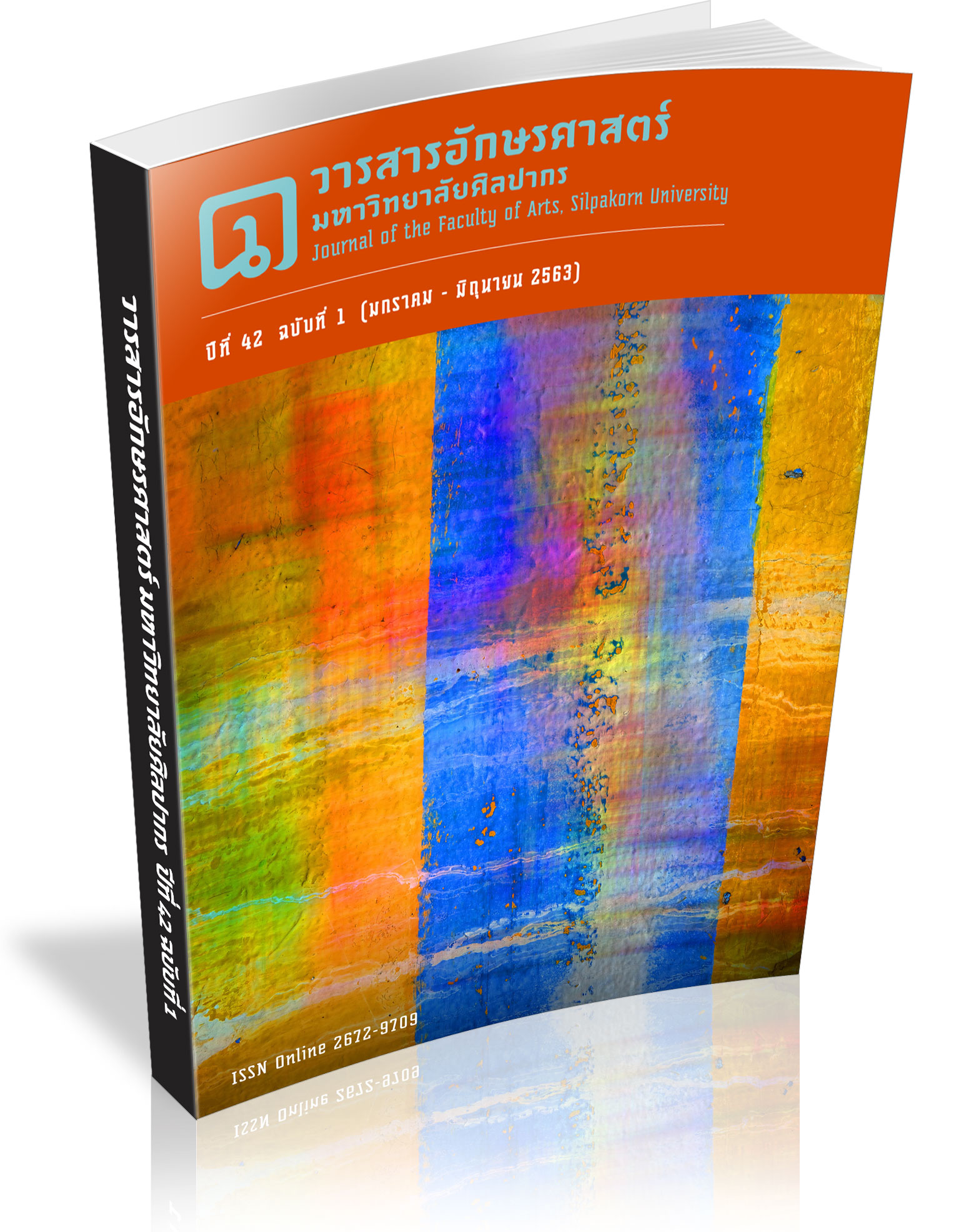Thai and Khmer Traditional Mahori: Comparison of Musical Cultural Characteristics
Keywords:
Thai Mahori, Khmer Mahori, Royal Mahori, MahoriAbstract
This article aims to comparatively examine the characteristics of Thai and Khmer Mahori. Although the Thai Mahori, which is a string-dominated classical ensemble, was originally emerged in the Ayutthaya period after Thais adopted the Khmer Mahori’s tradition, the development of the Thai and Khmer Mahori throughout their histories has brought them unique characteristics. Based upon these characteristics, the findings can be categorized into two groups of common and different characteristics of the two nations’ classical ensembles. The study showed that the common characteristics of the Thai and Khmer Mahori are (1) the ensembles’ similar selection of musical instruments and their instrumentation and (2) their similar tradition in naming songs which always suggest their ethnic musical expressions through the first words of the songs. Regarding the differences in the culture in music of the Thai and Khmer Mahori, two aspects were evidenced. The first difference is that the origin of the Thai Mahori’s music and documentation has been evidenced since the Ayutthaya period, but this was not the case for the Khmer Mahori. Second, the purposes of the two nations’ classical ensembles are different. In the past, the Thai Mahori was called for participatory to the court ceremonies and entertaining occasions while it is performed only in entertaining occasions at present. Compared with the Thai Mahori, the Khmer Mahori has been performed solely for entertaining purposes since the old days. The only change in it is that, in order to make it more accessible to people, the Khmer Mahori’s instrumentation has been adjusted to serve more average audience.
Downloads
References
Arunrat, U. (1983). Instrumental Music from Buddhism. Nakhon Pathom: Silpakorn University. (In Thai)
Buddhasartbundit. (1971). About Cambodian music. Phnom Penh: n.p. (In Thai)
Chuawen, Y. (2016). History of Southeast Asia before modern times. Nakhon Pathom: Silpakorn University Press. (In Thai)
Deva, B. C. (1979). Musical instruments of India. (A. S. B. C. Robert P.F. Lam, trans.). Hong Kong: Urban Council.
Heywood, D. (2008). Cambodian Dance Celebration of the Gods. Bangkok: Bangkok Printing.
Khian, Y. (2010). Early Cambodian musical instruments. Nonthaburi: Yin Yang Printing. (In Thai)
Krishnaswami, K. (1977). Musical instrument of India. Newdelhi: the director publications division ministry of information and broadcasting government of India patiala house.
Leng, S. (2018). Interviewed, December 2018. (In Thai)
Narom, K. (2005). Cambodian Music. Phnom Penh: ReyumNarom,
Narom, K. (2011). Music and Life of Khmer. Phnom Penh: Chappunrangsri.
Phaipheng, C. & In, S. (2003).Thai-related History in Cambodian textbooks, (Phakdikham, S. trans.). Bangkok: Pikanas Center. (In Thai)
Phakdikham, S. (2003). Thais-related History in Cambodian textbooks. Bangkok: Matichon. (In Thai)
________. (2013). Khmer era after Phranakorn. Bangkok: Matichon. (In Thai)
________. (2014). Khmer Art. Bangkok: Matichon. (In Thai)
Phikunsri, C. (1999). The Appreciation of Thai Music. Bangkok: Odeon Store. (In Thai)
________. (1993). Indian music. Khon Kaen: Khon Kaen University Press. (In Thai)
Royal society. (2007). Thai music encyclopedia PLENGTAB history and lyrics PLENGNAPAT history and prelude songs. Bangkok: Royal society.
Sam, S. (2002). Musical Instruments of Cambodia.Japan: Osaka National Museum of Ethnomusicology.
Sotheara, V. (2010). Pre-angkor incriptions of Cambodia 1. Phnom Penh: Angkor.
Suksawat, S. (1994). Khmer style art in Thailand: Intellectual backgrounds and artistic styles. Bangkok: Matichon Publishing. (In Thai)
Sunpongsri, K. (2015). Indian Art History. Bangkok: Chulalongkorn University Press. (In Thai)
Suthira, W. (2012). Inscription in Cambodia during the Phra Nakhon period. Phnom Penh: Department of History. (In Thai)
Thirawit, K. & Phasuk, S. (2000). Cambodian history, society, economy, security, politics and foreign affairs. Bangkok: Institute of Asian Studies, Chulalongkorn University. (In Thai)
Weltmuseum Wien. (2019). Mahori ensemble. Retrieved 22 September 2019, from https://www.weltmuseumwien.at/museumfromhome/
Downloads
Published
How to Cite
Issue
Section
License
ผู้เขียนบทความต้องยินยอมในข้อกำหนดต่าง ๆ ของวารสารก่อนส่งบทความตีพิมพ์




